In an agile team, the Product owner manages the product backlog and defines the project priorities and vision. An agile roadmap is one of the ways they define the project vision. The main function of an agile roadmap should not be confused with the backlog and it establishes a high-level and long-term product overview of the product’s evolution. The roadmap is where vision meets strategy.
The agile roadmap helps the product owner in:
- Providing the stakeholders with a high-level overview
- Giving teams insight into timelines and priorities for daily tasks
- Explaining the project’s importance to the customer and the organization
- Implementing a long-term strategy
In a project management setting focused on individual tasks, the agile roadmap offers a bigger picture of planning to anticipate growth, get stakeholders, and focus teams.
Types Of Agile Roadmaps
Two main agile roadmaps are time-based and progress-based.
Time-based roadmaps:
A time-based roadmap is focused on the way the project will evolve in a given period. This can be seen in months, weeks, years, or even quarters. It is valuable to stakeholders as it defines the key releases and timelines without being bogged into the daily processes.
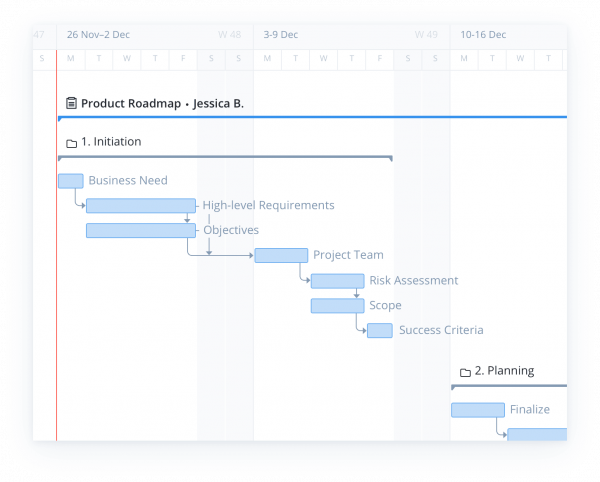
Progress-based roadmap:
A progress-based roadmap is represented through a “to-do-“in-progress”-“complete” approach to road mapping and is depicted through a kanban-like board. It focuses on progress-making on releases and critical features as opposed to following a time frame.
A roadmap is a document of high importance but should not be kept in stone. Because agile principles and values recommend adapting to change, the roadmap, the roadmap should evolve based on learning in every iterative cycle.
Creating An Agile Roadmap
Start buidling your agile roadmap by articulating your vision. What value will the customer get, and what will the project’s goals, main priorities, and key objectives be? Develop project KPIs by determining milestones and success indicators.
Optimize your agile roadmap to target an audience. The roadmap you present to the project team will have more details compared to the one presented to other stakeholders who need to understand the general time frames, goals, and strategy of the project.
To get started, try a template that’s easy to use and becomes a part of your agile toolkit. Create up-to-date, realistic, and effective roadmaps that communicate your vision to the stakeholders and the team.
Why Do Agile Teams Need Roadmaps?
Most agile teams do not want to lock down what they will come across during each sprint in advance, they still need some sense and direction of what is to come. Without it, they make their lives harder by ignoring the ramifications of their work on their future selves.
While a sprint places a focus on current tasks, there are a lot of dependencies and complexities to come to have a look at and plan and follow accordingly. This facilitates the teams to build foundations instead of boxing themselves with short-sighted decisions.
Beyond this, agile teams must plan resources. Does the team have the skills required for what’s to come? Are there services or tools they will need they need to acquire and not wait until the last minute and encounter delays? Will there be resources available to deliver what’s expected?
Roadmaps also play an important role in the morale and mindset of those working on sprints. They illustrate the goals, strategy, and objectives for the product and connect the dots toward a bigger picture. Instead of just a to-do list, the organization sees how it fits and where they are trying to go.
Agile Roadmap Miro
Miro is an online platform with a whiteboard for the collaboration of distributed teams.
The canvas of the platform has been designed in a way that enables more than 20M users to lead meetings and workshops, brainstorm ideas, and design products. Miro was founded by Oleg Shardin and Andrey Khusid in 2011 as RealtimeBoard and was rebranded in 2019 as Miro.
Miro’s whiteboard is a perfect canvas tool to share and create your agile roadmap. You can start by simply selecting your agile roadmap template.
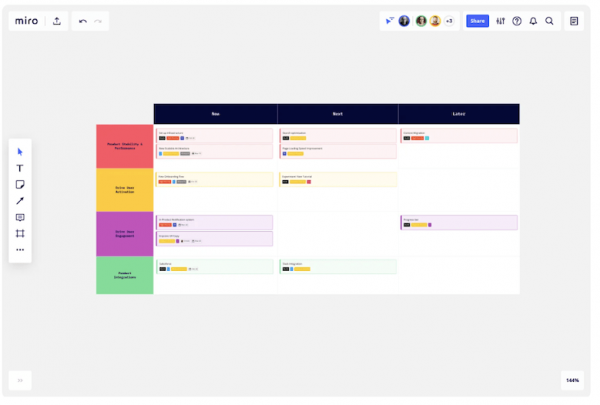
Agile Roadmap Monday.com
Monday.com is an open OS work platform designed for users to create tools for running work. The interface includes building blocks like integrations and Apps and allows teams to customize and build their work solutions. Whether you need to create a marketing campaign process, streamline a sales pipeline, build a tracker, or run a CRM- Monday.com provides a space for you to stay efficient and agile in all the tasks you do.
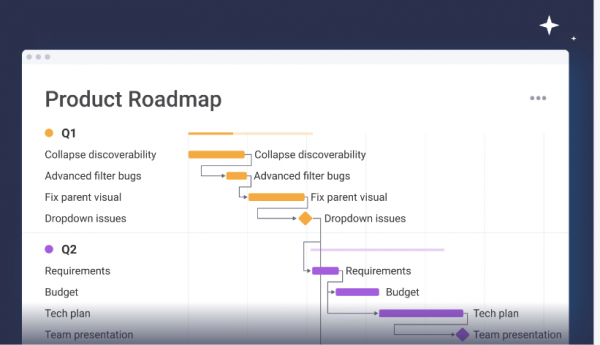
Agile Roadmap Jira
Jira embraces the agile philosophy and gives you a customizable platform to implement the elements and processes that works best for your project with a rich feature that contains the elements of agile project management techniques.
Jira roadmap is an important tool for agile projects and illustrates the what and why of teamwork. Jira roadmaps enable you to connect product strategy and tasks and to prioritize and order tasks based on customer feedback – both are vital to agile methodology.
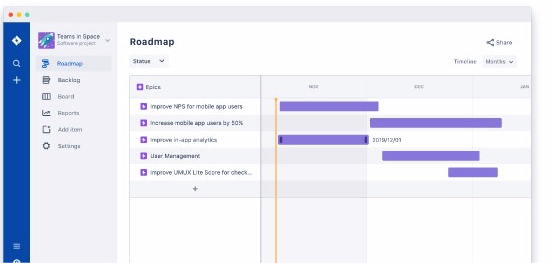
Agile Roadmap Microsoft Planner
Microsoft Planner is a tool for web-based work management. It is a service by Office 365. This tool facilitates the handling and planning of small projects. With Microsoft planner, you can easily organize and assign tasks and times. You can also share files, set deadlines, and communicate with the team members.
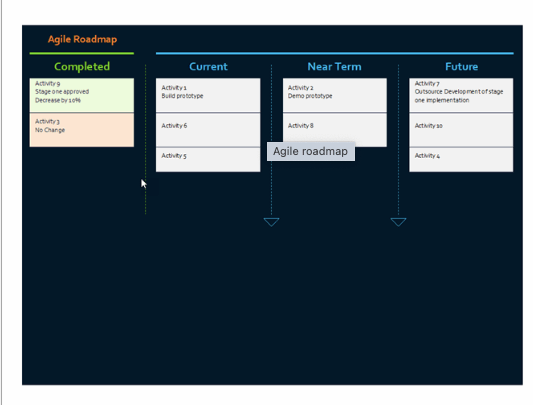
These easy-to-use agile roadmap templates are ideal to keep tabs on the progress and status of product components. Schedule feature development details for development, product, quality assurance, and development teams to prioritize initiatives and portray the big picture of deliverables. These agile roadmap templates will help your team to stay focused on the developments and facilitate you to improve the product.
Pick What Works and Keep it Updated
Whether you choose one or all of the above, the most important factor in that decision is which will add the most value to your organization. Which process needs a spotlight on it? Where are the information gaps and communications breakdowns occurring where a roadmap can improve things?
Regardless of your selections, the only worse thing than having no roadmap is having an inaccurate one. Be sure to commit and stick to an update that ensures every team member is looking at the current situation and not an idealized view of things that’s been scuttled once the team members got to work.
How To Use The Agile Roadmap Template
The use of a road mapping tool and template can save you time in this regard, leveraging emailed versus cloud files, automatically updating stakeholders, and simplifying the process through a simple user experience and integrations with tools in stacks such as Azure DevOps and Jira.
Explain the project and your team
Start with the basics, under the team mission section, outline the main purpose of your team and the team aims to achieve.. In the project information section, insert documentation or details that may help the team members look at the page. From Jira and OKRs to instructions about file bugs, consider this as a chance to know the information out there and save your time in the long run.
Plan out your quarters
Although the Roadmap overview section is at the top of the template, skip it and go ahead for now. Instead, focus more on planning every quarter under the Q1 Q2, and so on. Use the tables to note the feature priority, launch dates, status, effort, and other notes. If planning a roadmap for less than a year, you can easily delete irrelevant quarters.
Complete the overview
Now that you have split things, it will be easier for you to complete a roadmap overview in the template. This will serve as your timeline for all launched features. Use the lanes and bars to capture projects and schedule elements and features. Avoid getting into weeds and maintain a high level. It will create an easier overview and will be helpful.
Check in on your roadmap frequently
You know that there are things that come up and this roadmap will not be in stone. Return to this template as changes occur over the year and make necessary updates. This way, your team members across the organization will be equipped with accurate and most recent information.
